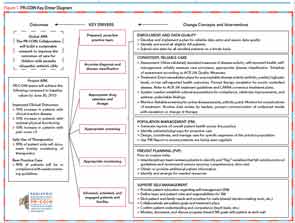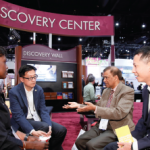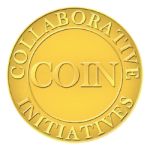He also emphasized the benefit of the tools provided by PR-COIN to assist with previsit planning, which he says his institution has implemented with good results. “Doing previsit planning, we document all the critically important factors that need to be attended to and determine what needs to be done at that visit, so the visit is much smoother, prevents redundancies, and ensures that what needs to be done gets done in an efficient manner,” he says.
For Catherine April Bingham, MD, a pediatric rheumatologist at Penn State Hershey Children’s Hospital, Hershey, Pa., a key benefit of participating in the initiative is the networking and sharing of information that facilitates rapid spread of improvement. “One site figures out how to do something really well, shares it, and the others in the network can immediately implement it without having to go through all the steps themselves,” she says.
She emphasizes that PR-COIN has allowed her and her colleagues to work toward change and to know how to do it. “I think it is exciting that PR-COIN gives you certain tools,” she says. “I feel more empowered to work on things that are just not working in critical care.”
Does It Benefit the Patient?
The benefits patients receive when their physicians participate in a network such as PR-COIN are demonstrated by the improved outcomes seen in six other networks currently operating through the James M. Anderson Center for Health Systems Excellence at Cincinnati Children’s Hospital Medical Center. The most advanced network, which is on inflammatory bowel disease (IBD), has seen an increase in remission rates in kids with IBM from about 60% in 2007 when the initiative began to over 75% currently, according to Peter Margolis, MD, PhD, who is the center’s director of research, as well as a professor of pediatrics. “This increase in remission rates of IBD is without the introduction of new medications and is the result of delivering care better,” he emphasizes. The IBD network started with 10 centers and has grown to 51 centers with a current registry of 15,000 patients.
Other networks have also seen remarkable results, he says, highlighting a 50% reduction in bloodstream infections in intensive care units (ICUs) for children through the Solutions for Patient Safety network (http://solutionsforpatientsafety.org/), and reductions in the percentage of mothers who have preterm deliveries because of elective delivery through the Ohio Perinatal Collaborative Quality Collaborative network (https://opqc.net/). “The results are pretty remarkable,” he says. “As physicians, we sometimes don’t realize it, but there are gaps in our clinical care. Patients slip through the cracks: they may not come back with proper frequency, physicians forget to increase a medication dose or order a lab test. All of this adds up and you have patients whose health is not as good as it could be.”
Overcoming the Lake Wobegon Effect and Other Challenges
Nothing comes without its downside, but for the most part, the downside to participating in a network such as the PR-COIN is one of time and psychology. According to Dr. Margolis, one of the biggest and first challenges of joining a network is psychological: “As physicians, we all think we are doing a really good job; when we measure our performance, we are never as good as we think we are.” He describes this as the Lake Wobegon effect, where physicians think they are above average when there are places where the care they provide could be better. He attributes this not to a lack of hard work by physicians, but to the system they work in. “Our effectiveness depends on creating a system that is working well,” he emphasized.




